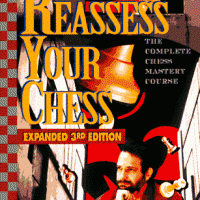
Your Questions Answered: Anti-Sicilian & Planning
Bdsr asked:
I play the Sicilian and recently I've been encountering 1.e4 c5 2.c4!?, transposing into an English. Can White force a Maroczy Bind here with a quick 3.Nf3 and 4.d4? Does Black have a good response? If not, then why don’t the strong players who enjoy the Maroczy Bind (I’m guessing a lot since it gives a good space advantage) play this line?
Dear Bdsr:
Of course, there’s nothing wrong with 2.c4 and, as you suggest, in many cases it will transpose into various lines in the English Opening. Naturally, players who open with 1.e4 might not be inclined to play the English (else why not start with 1.c4?). On the other hand, playing Black against the English isn’t necessarily any more dangerous than Black in the Sicilian, so the second player shouldn’t be particularly worried.
Having said that, those that do try and transpose with this move order are giving up some flexibility, since Black has some creative/original ways to react. For example:
Anonymous asked:
I have a question that can get rid of some thorns in my mind if answered. What is a plan? I mean, how do I plan???? Also, how do I know what plan is right for me?
This whole "plan thing" among grandmasters is getting really confusing. Can you also recommend a good book on this subject? Right now my USCF rating is around 1420 (ICC is about 1600).
Dear Mr. Anonymous:
Eliot, you're not alone! Many players haven't grasped the concept of planning. Quite simply, a plan is a way of taking advantage of the positive features (imbalances) in your position and the negative imbalances in the opponent's. For example, if the opponent has an isolated pawn on an open file, a logical plan would be to bring as many pieces as possible to bear on it. Double or even triple your heavy pieces on the open file. Let a Knight and Bishop join in on the destruction of that poor pawn. Remember: chess is a team effort and you want your whole army to work together towards a particular goal.
You said something very interesting: "How do I know what plan is right for me?" The fact is, in most cases a plan isn't based on what's right for you. It's not a personal decision. A plan is something the board wants (even needs!) you to do. And it's up to you to learn to read the body language of the board and ascertain what the proper plan is. Thus, you might be the greatest tactical genius the world has ever seen, but if the right plan is to quietly take more space and squeeze him to death, then that's what you have to do.
My book, HOW TO REASSESS YOUR CHESS (3rd Edition) covers this in detail. However, that edition will soon be out of print. Thus, look for the 4th Edition of HOW TO REASSESS YOUR CHESS -- completely rewritten from scratch, whole chapters torn out (and many new ones added), with all new examples, and far more personal than the previous edition. I'm working on it now, and hope to have it in bookstores by the end of the year (or by March 2010 at the latest).
If you need something now, try to get the 3rd edition. But I would also like to recommend THE AMATEUR'S MIND, which should prove very instructive for players from 1000 to 1600.






